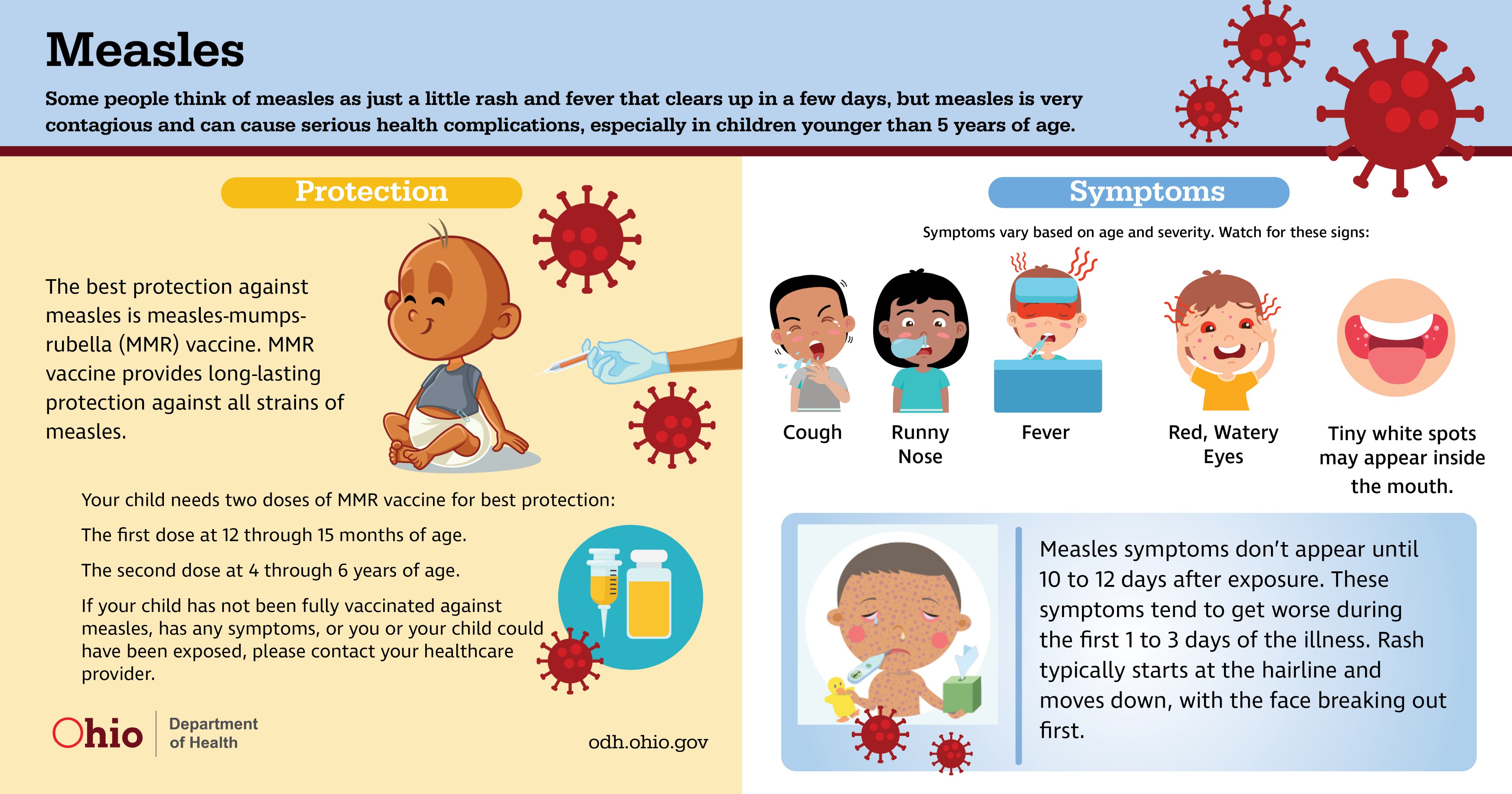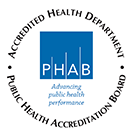
Going to one of our MMR vaccine clinics? Fill out your consent form before you come!
2025 Measles Outbreak News Releases:
03/26/2025 - Confirmed Measles Case In Knox County
03/31/2025 - Two More Confirmed Measles Cases In Knox County
04/08/2025 - Measles Outbreak In Knox County, 14 Confirmed Cases
04/14/2025 - Measles Outbreak In Knox County, 20 Total Confirmed Cases
Ohio Department of Health - Health Director Urges Parents to Ensure Children Are Vaccinated Against Measles as ODH Confirms Outbreak in Ohio
Ask the Experts: MMR (Measles, Mumps, & Rubella): https://www.immunize.org/ask-experts/topic/mmr/
MMR Guidelines for Adults:
- Adults born before 1957 are believed to have had the measles virus and are presumed to be immune.
- Two measles vaccines were available from 1963-1967. There was a live measles vaccine and an ineffective, inactivated measles vaccine. Individuals who received vaccines during this time who are unsure which type of vaccine they received, or are sure it was the inactivated vaccine, should be revaccinated with 1 dose of MMR or 2 doses of MMR, if high-risk*.
- After 1967, only the live measles vaccine was available until the current MMRII combination vaccine was licensed in 1971. Individuals vaccinated between 1967-1989 likely only received one dose of the live measles virus-containing vaccine and should get a second dose in the event of an outbreak or if they are high-risk*.
- Adults with no evidence of immunity should get 1 dose of MMR vaccine, or two doses if high-risk*. Evidence of immunity is defined as documented receipt of one or two doses of live measles virus-containing vaccine, laboratory evidence of immunity, laboratory confirmation of disease, or birth before 1957.
- *Susceptible high-risk people need 2 doses of vaccine, given 4 weeks apart. High-risk people include school-age children, healthcare personnel, international travelers, and students attending post-high school educational institutions.
MMR Guidelines for Children:
- The current childhood vaccine schedule recommends all children get their first dose of MMR vaccine at 12-15 months of age and a second MMR vaccine at 4-6 years of age.
- In certain circumstances, MMR is recommended for infants age 6 months through 11 months. This includes administration before international travel or may be considered as a control measure during a local measles outbreak. Knox County is currently in an outbreak and is recommending MMR vaccine for children beginning at 6 months of age. Remember, doses administered prior to 12 months of age do not count as part of the vaccine schedule 2-dose series, if it is administered more than 4 days before a child’s first birthday. Repeat the first dose when the child is age 12 months.
- In the case of a local outbreak, children who receive their first dose at 12 months or older may receive their second dose four weeks later instead of waiting until age 4 through 6 years.
- Measles, mumps, and rubella vaccine viruses are not transmitted from the vaccinated person, so MMR vaccination of a household contact does not pose a risk to a pregnant household member.
- Finally, remember that infants too young for routine vaccination and people with medical conditions that contraindicate measles immunization depend on high MMR vaccination coverage among those around them. Be sure to encourage family members and friends to get vaccinated if they are not immune.
Questions? Email the infectious disease team: This email address is being protected from spambots. You need JavaScript enabled to view it.
WHAT IS MEASLES?
Measles is an acute, highly contagious respiratory disease caused by a virus. Most people in the United States are protected against measles through vaccination. However, unvaccinated travelers can get measles while they are in other countries and bring measles into the United States. They can spread measles to other people who are not protected against measles, which sometimes leads to outbreaks. This can occur in communities with unvaccinated people.
SYMPTOMS
The symptoms of measles generally appear about seven to 14 days after a person is infected. Measles isn’t just a little rash. Measles can be dangerous, especially for babies and young children. Measles typically begins with
- high fever (may spike to more than 104°),
- cough,
- runny nose (coryza), and
- red, watery eyes (conjunctivitis).
If someone is sick and has symptoms, they should call their health care provider to let them know that they have potential measles exposure before going into the provider’s office.
TRANSMISSION
Measles spreads to others through coughing and sneezing. Infected people can spread measles to others four days before through four days after the rash appears. The measles virus can live for up to two hours in an airspace where the infected person coughed or sneezed. Measles is so contagious that if one person has it, up to 90% of the people close to that person who are not immune will also become infected.
PREVENTION
Measles can be prevented with MMR vaccine. The vaccine protects against three diseases: measles, mumps, and rubella. Children are recommended to get two doses of MMR vaccine, starting with the first dose at 12 through 15 months of age, and the second dose at 4 through 6 years of age. Teens and adults are considered up to date on their MMR vaccination if they’ve had the two doses. Individuals born before 1957 are considered immune.






